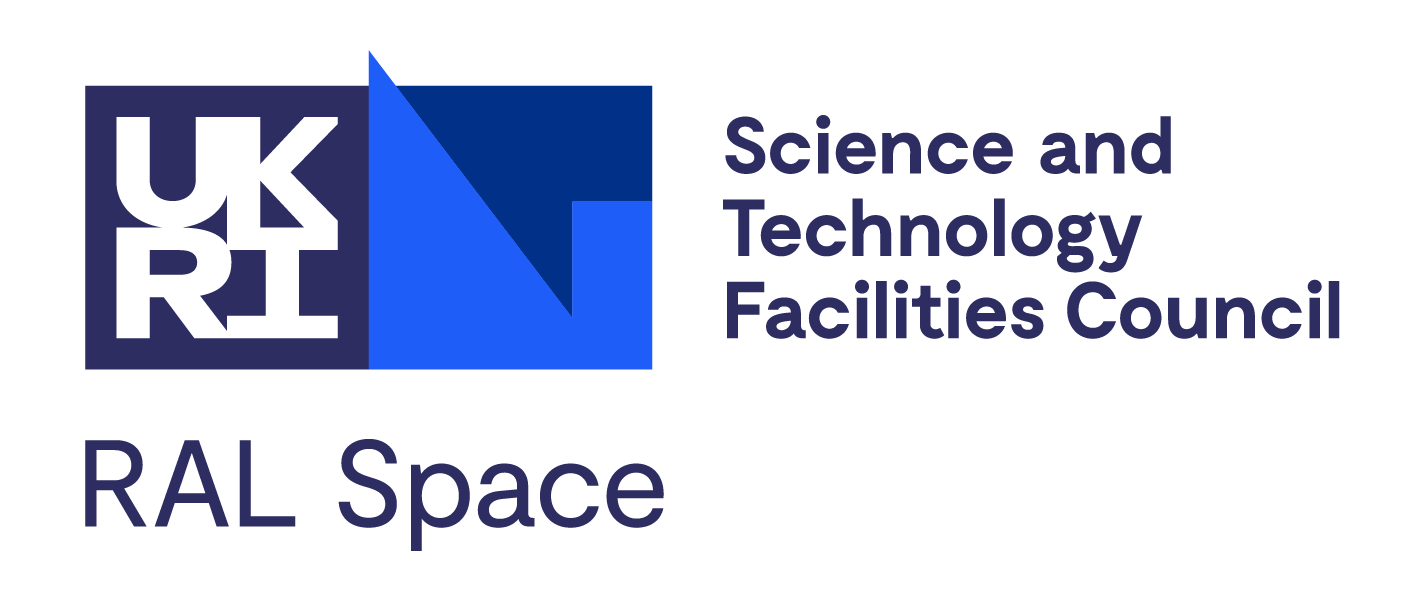
Highlights 2022

Welcome from
Dr Sarah Beardsley

2022 has been a landmark year for the UK space sector, marking 60 years of involvement in space missions. RAL Space also celebrated its 60th anniversary, along with 90 years of continuously measuring the ionosphere and 55 years since the opening of our Chilbolton facility in Hampshire.
These anniversaries shine a light onto our heritage, achievements and support to our communities over many years and as the newly appointed Director of RAL Space, I am excited to be leading RAL Space as we look forward to how we can best support the space sector in delivery of the National Space Strategy.
I’m thrilled to share with you some of our highlights over the last year which demonstrate the breadth of our programmes – from innovative technologies that will enable the transition to a Net Zero economy and research projects to help us understand some of the unanswered questions of our universe, to supporting the development of tools to tackle space debris, and demonstrating our skills and capabilities in operating large scale facilities such as the National Satellite Test Facility, which we’re excited to commission in 2023.
It has also been a delight to see the amazing first images captured by the Webb telescope, which I’ve viewed with a sense of pride. RAL Space’s involvement in the MIRI instrument onboard Webb was being undertaken as I joined the department as a planetary scientist in 2000 and it has been wonderful to watch the progress of this project and see the fruition of my colleagues’ involvement in this space mission.
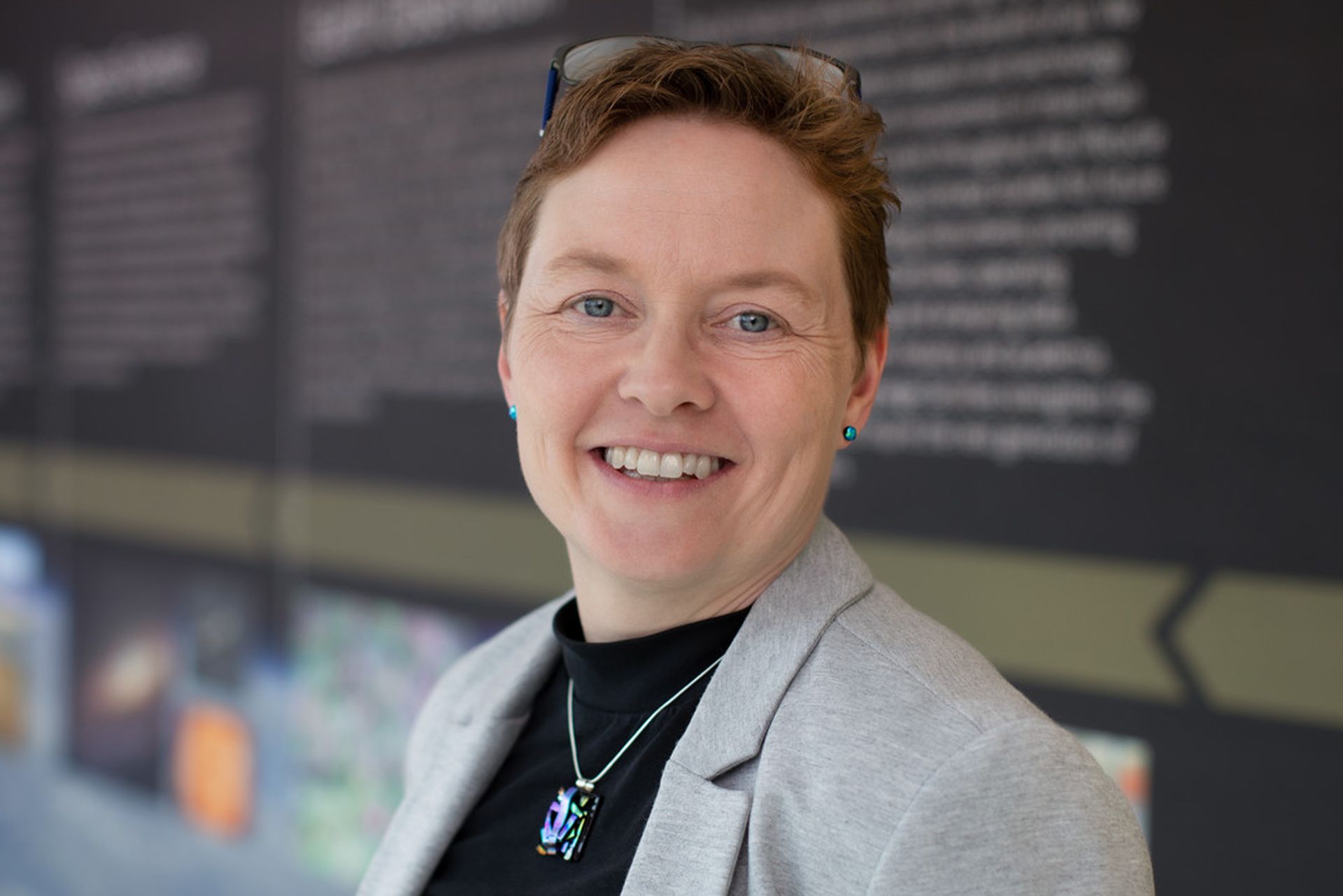
Dr Sarah Beardsley, Director STFC RAL Space. Credit: STFC RAL Space
Dr Sarah Beardsley, Director STFC RAL Space. Credit: STFC RAL Space
Our heritage and this snapshot of some of our projects are underpinned by our amazing people from our technicians, apprentices and early career staff, through to our more experienced staff who are dedicated to delivering our scientific programmes, managing our facilities and inspiring and involving the next generation into the space sector. I am proud of my team’s devotion and commitment and hope you enjoy reading their stories.
RAL Space - Science driven, technology enabled
RAL Space is the UK’s national space laboratory, advancing the understanding of space and our environment for the benefit of all. Our activities and facilities enable scientific research in disciplines including climate science, space weather and astronomy. Over the past 60 years, we have had significant involvement in more than 210 instruments on space missions to date.
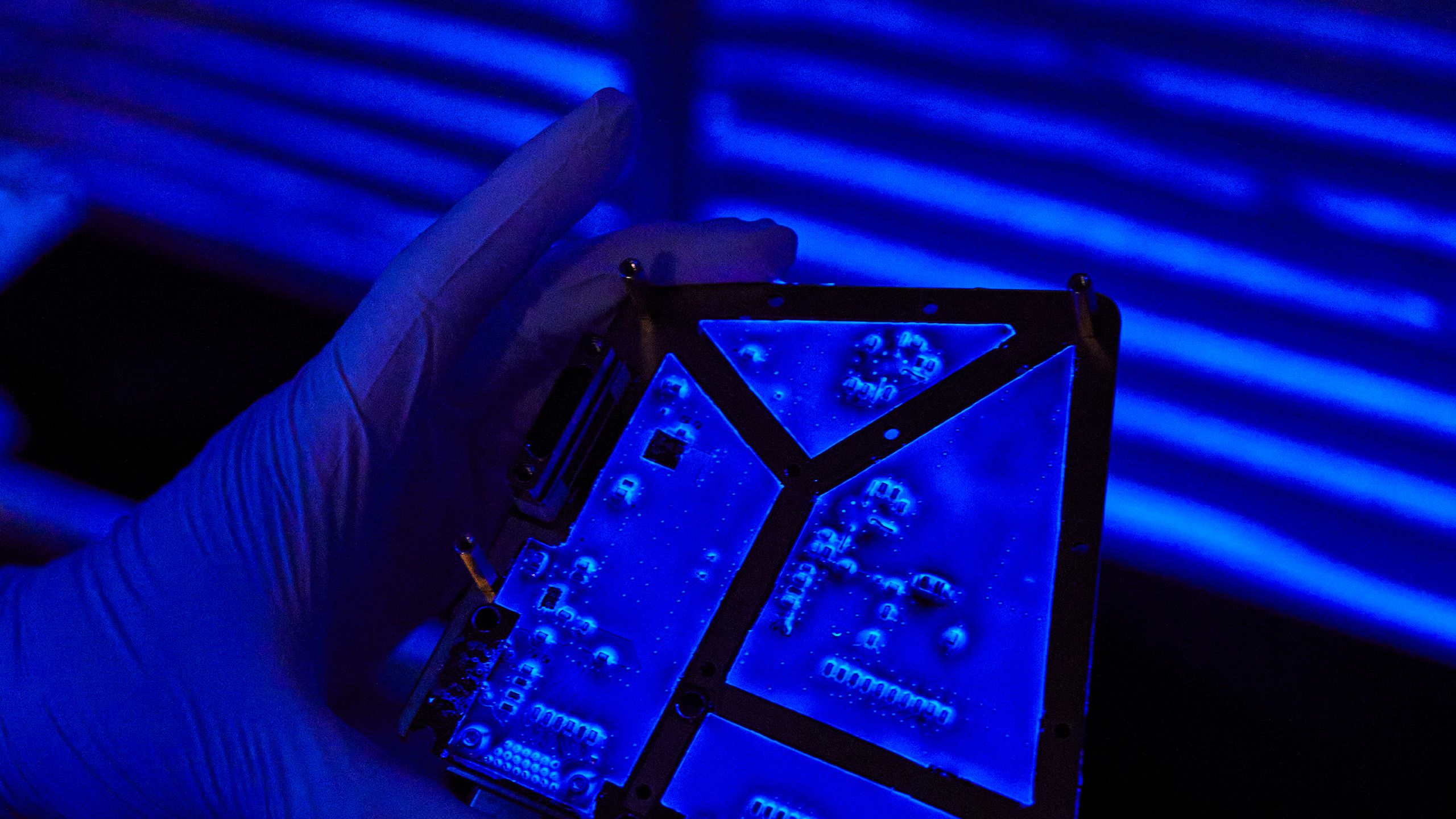
We are RAL Space (8mins 49secs)
We run some of the UK's most advanced space and science facilities and our experts work throughout the lifecycle of space missions – from leading concept studies for future spacecraft and developing bespoke scientific instrumentation, to providing space test and calibration services, operating ground stations, and processing and analysing data. We support UK academia and industry by offering access to world-leading knowledge and unique facilities.
RAL Space is an integral part of the Science and Technology Facilities Council and is the space hub for UK Research and Innovation.
RAL Space in 2022


Real-time monitoring of the carbon capture and storage (CSS) process at Hellisheiði, Iceland
The Spectroscopy Group at RAL Space has developed and successfully deployed a Laser Isotope Ratio Analyser (LIRA) for measuring the concentration of sulphur isotopes in gases destined for carbon capture storage.
The challenge: The capture and storage of carbon produced in industrial processes will play an important role in reducing emissions into the atmosphere in the transition to a Net Zero economy. Some industries won't be able to eliminate carbon production completely. Even geothermal power, a green energy solution, produces some carbon dioxide and polluting gases.
A number of firms are proposing carbon capture and storage technologies including Carbfix, an Icelandic company turning carbon dioxide emitted at Reykjavik Energy's Hellisheiði geothermal power plant into rocks for long term storage.
They wanted to understand the carbon mineralisation process and monitor the level of carbon dioxide and hydrogen sulphide being emitted by the power plant and captured for storage. Optimising these carbon capture technologies requires tools capable of continuously monitoring and analysing the concentration of dissolved emission gases in-situ – a process that is currently undertaken manually.
The solution: RAL Space scientists have developed the LIRA spectrometer which can be used to monitor the carbon capture and sequestration process.
To test the capabilities of LIRA – which was originally envisaged for use on other planets – the instrument was installed on one of Reykjavik Energy's operational turbines. The team used the instrument to measure the isotope ratio of hydrogen sulphide in the emitted gases, with the aim to get insights on the subsurface processes.
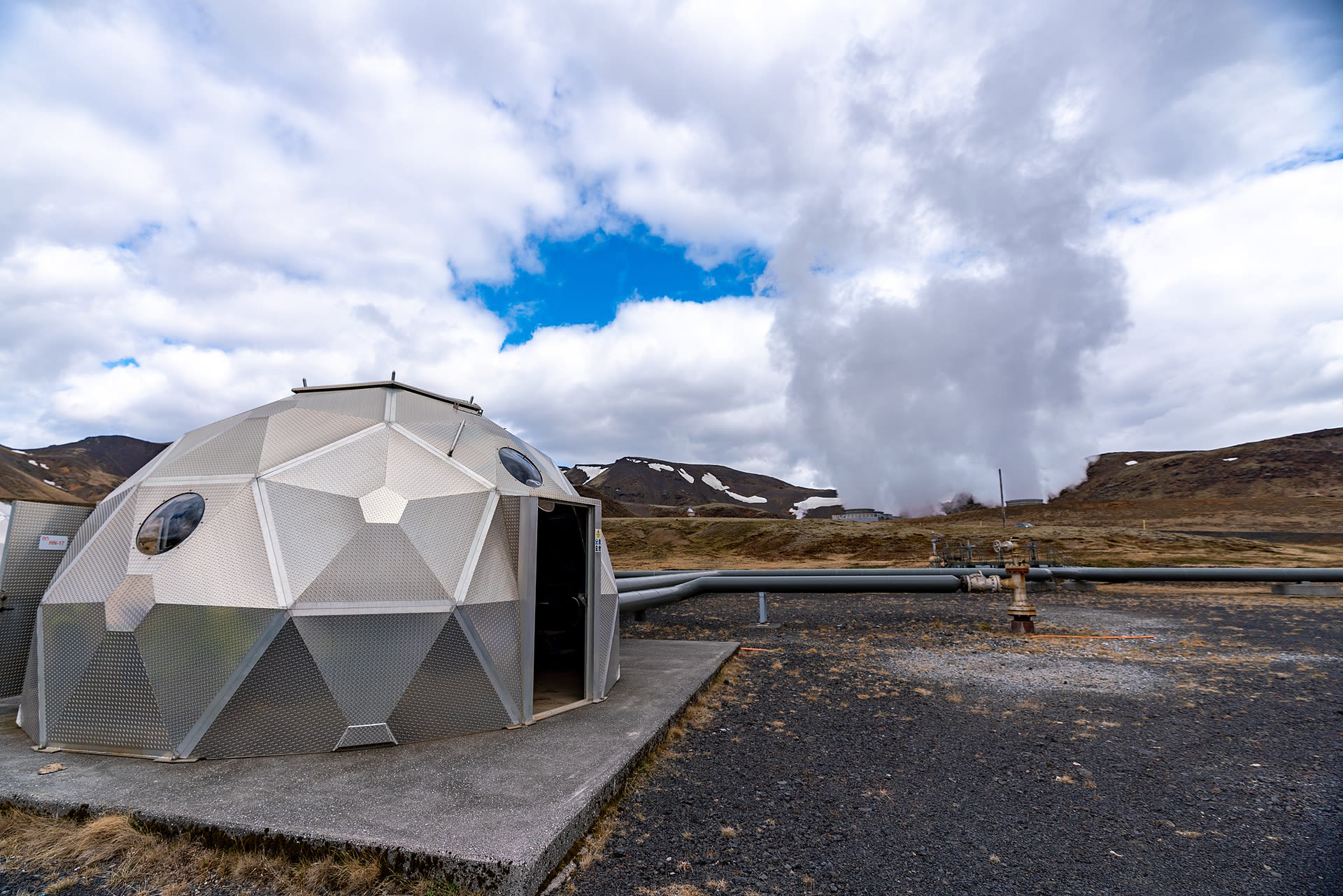
Boreholes and pipes at the Hellisheiði Geothermal Plant. Credit: Ron Przysucha
Boreholes and pipes at the Hellisheiði Geothermal Plant. Credit: Ron Przysucha
The outcome: The data generated will now help RAL Space scientists to develop a prototype instrument capable of monitoring emissions and sharing data in real-time, improving our understanding of what is being captured by carbon capture facilities. Continuous online monitoring offers a significant performance advantage over current manual testing methods and is a major step towards the goal of an autonomous monitoring and analytical system that will be vital for large scale carbon capture facilities.
Additional information: This work forms part of the Geothermal Emission Control H2020 project, led by Reykjavik Energy and funded by the European Commission.
“Carbfix are now in a phase where they want to deploy their carbon capture facilities on a large industrial scale – which is what we actually need to address climate change. To maintain a 1.5°C global warming scenario at the end of the century, about 5 Gigatonnes per year needs to be captured by 2030. Helping CCS to scale-up is therefore vitally important.”
Dr Damien Weidmann, RAL Space Spectroscopy Group Leader
Validating tools for Space Surveillance and Tracking
The challenge: As of 2022, there are around 5000 active satellites orbiting Earth, along with millions of pieces of space debris. Satellites and debris tracking is becoming increasingly important to minimise the risks of collision and harm to active satellites.
Space situational awareness (SSA) data can be used to determine the characteristics of an object in orbit, which will be useful to support debris removal efforts and to characterise unknown objects.
The solution: RAL Space’s Chilbolton Advanced Satellite Tracking Radar (CASTR) plays an important role in tracking objects in space. It regularly tracks spacecraft and debris, detecting targets as small as 10cm across in low Earth orbit, beyond 3500km.
During a recent study led by the aerospace company GMV on behalf of the French Space Agency (CNES), the CASTR operations team at Chilbolton Observatory were tasked with observing 57 objects for a period of three months (March to June 2022) to validate a tool developed to determine an object’s rotational properties.
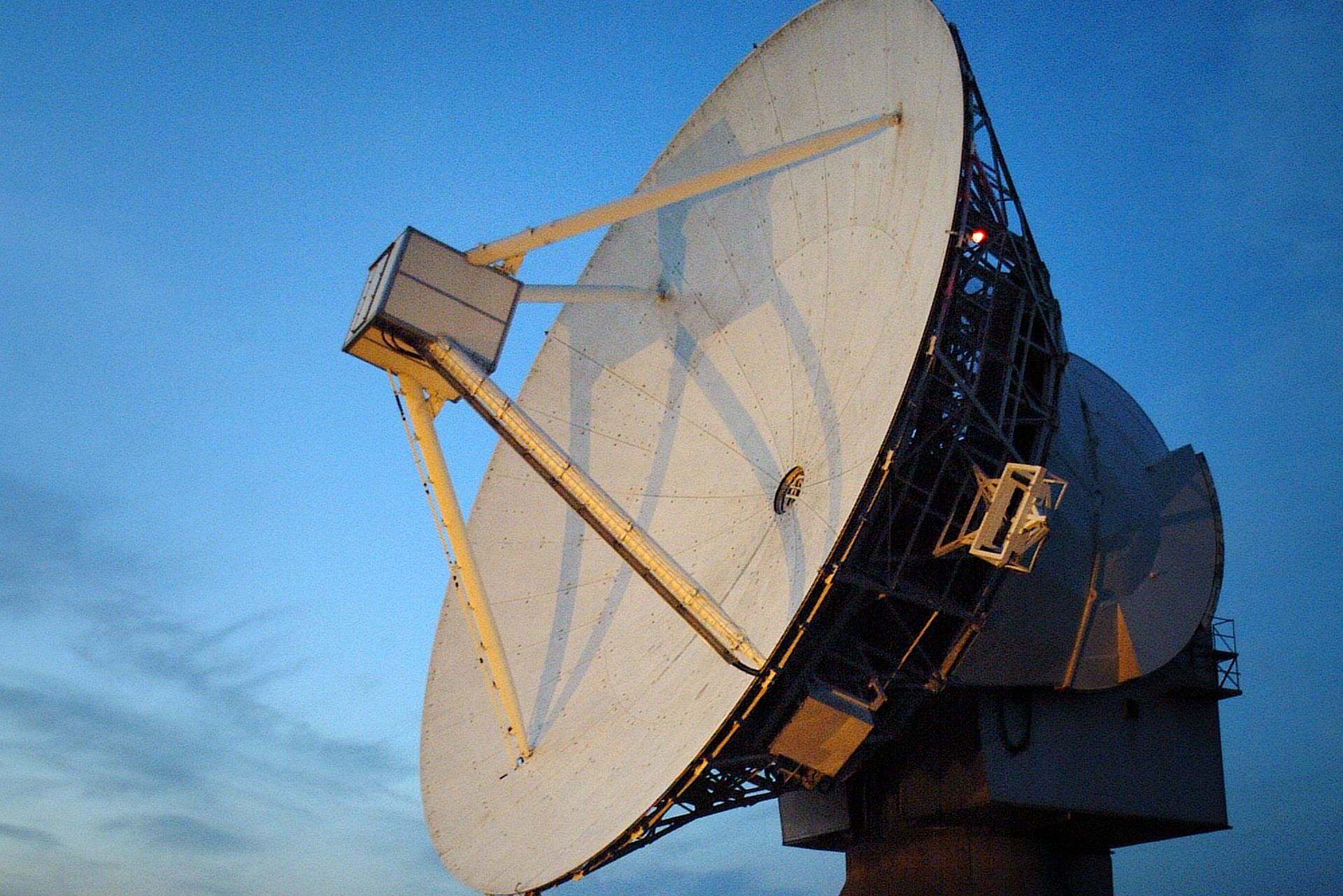
The 25m dish at Chilbolton Observatory. Credit: STFC RAL Space
The 25m dish at Chilbolton Observatory. Credit: STFC RAL Space
The outcome: Data from CASTR and five optical telescopes indicated that the GLADIATOR tool (Generator of Light, Area and DIstance measurements and ATtitude determinatOR) is a robust and effective method to determine an object’s rotational properties by combining different types of SSA data. It could potentially be used in future space surveillance and tracking (SST) systems to infer additional characteristics of objects in orbit. This work is financed by the EU SST and lead by CNES. The EU SST activities have received funding from the European Union programmes*.
“The adaptability of CASTR makes it well-suited for a range of activities. The team here are happy to have contributed to this study and are looking forward to supporting future missions through CASTR’s tracking and satellite communications capabilities.”
Darcy Ladd, Station Manager at Chilbolton Observatory
* Notably from the Horizon 2020 research and innovation programme under grant agreements No 952852, No 785257, No 760459, No 713630 and No 713762, and the Copernicus and Galileo programme under grant agreements No 299/G/GRO/COPE/ 19/11109, No 237/G/GRO/COPE/1 6/8935 and No 203/G/GRO/COPE/15/7987
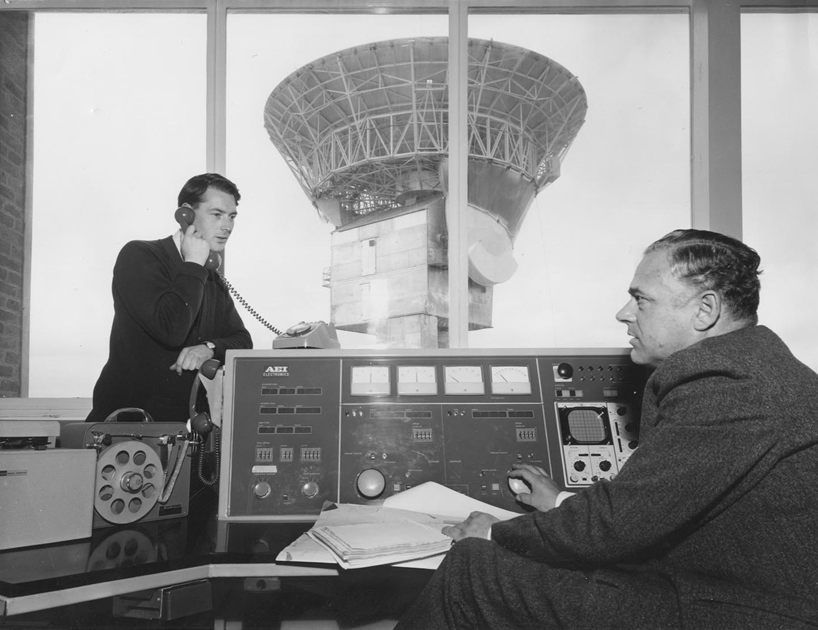
Chilbolton Observatory opened its doors in 1967 and has been supporting cutting edge radio science activities for the last 55 years. The observatory remains a hub for science and innovation, staffed by a small but dedicated team who keep the observatory running, undertake research and enable UK and international scientists to access this important national asset.
Chilbolton Observatory control room in 1967. Credit: STFC RAL Space
First images from the James Webb Space Telescope
A culmination of over 20 years of hard work and scientific innovation led to the launch of the James Webb Space Telescope on 25 December 2021 and after just six months, on 12 July 2022, Webb’s first full-colour images were released. These stunning first images were received with much excitement, not only by the public and astronomers who will use the data to study our universe, but by the people who have dedicated so much time and effort into building mankind’s most advanced space telescope.
The European contribution to Webb includes two of the four on-board instruments – one of which is the Mid-Infrared Instrument (MIRI). MIRI offers a sensitivity and resolution many times greater than any other mid-IR instrument and can see through the dust obscuring distant objects in space. The instrument is playing a key role in observing light that has travelled from the early stages of the Universe and will allow us to study the formation of stars and galaxies.
MIRI was designed, assembled, and tested by a European consortium of ten member countries, led in partnership with the United States by the UK and European Principal Investigator Professor Gillian Wright, Director of STFC’s UK Astronomy Technology Centre (UK ATC). After passing critical design reviews, MIRI was integrated and tested at RAL Space, and was the first of Webb’s instruments to be handed over to NASA in 2012. Following launch, scientists and engineers from RAL Space and the UK ATC were fundamental in MIRI’s commissioning phase and ensuring that the instrument operated as expected.
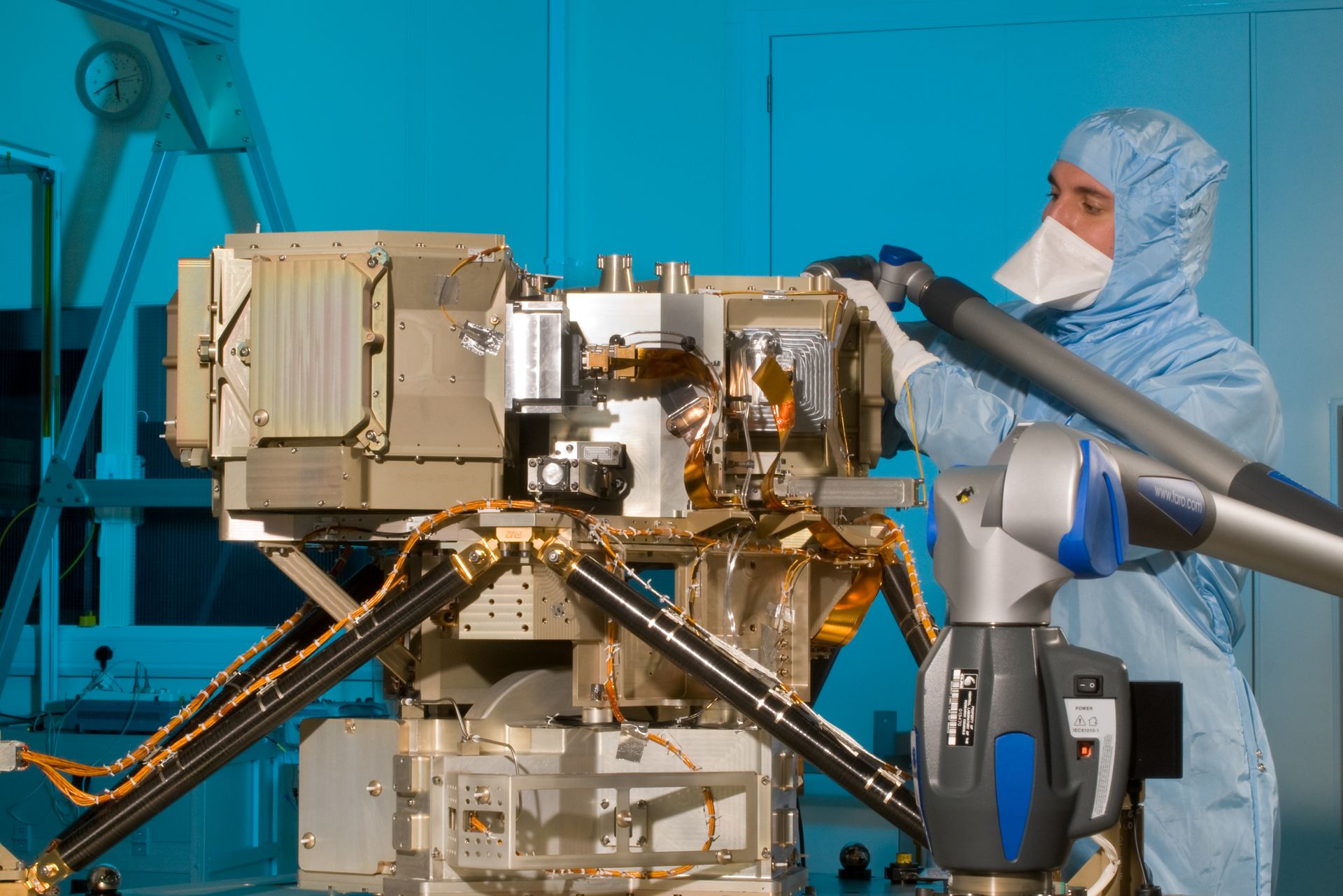
MIRI undergoing alignment testing at RAL Space in 2012. Credit: STFC RAL Space
MIRI undergoing alignment testing at RAL Space in 2012. Credit: STFC RAL Space
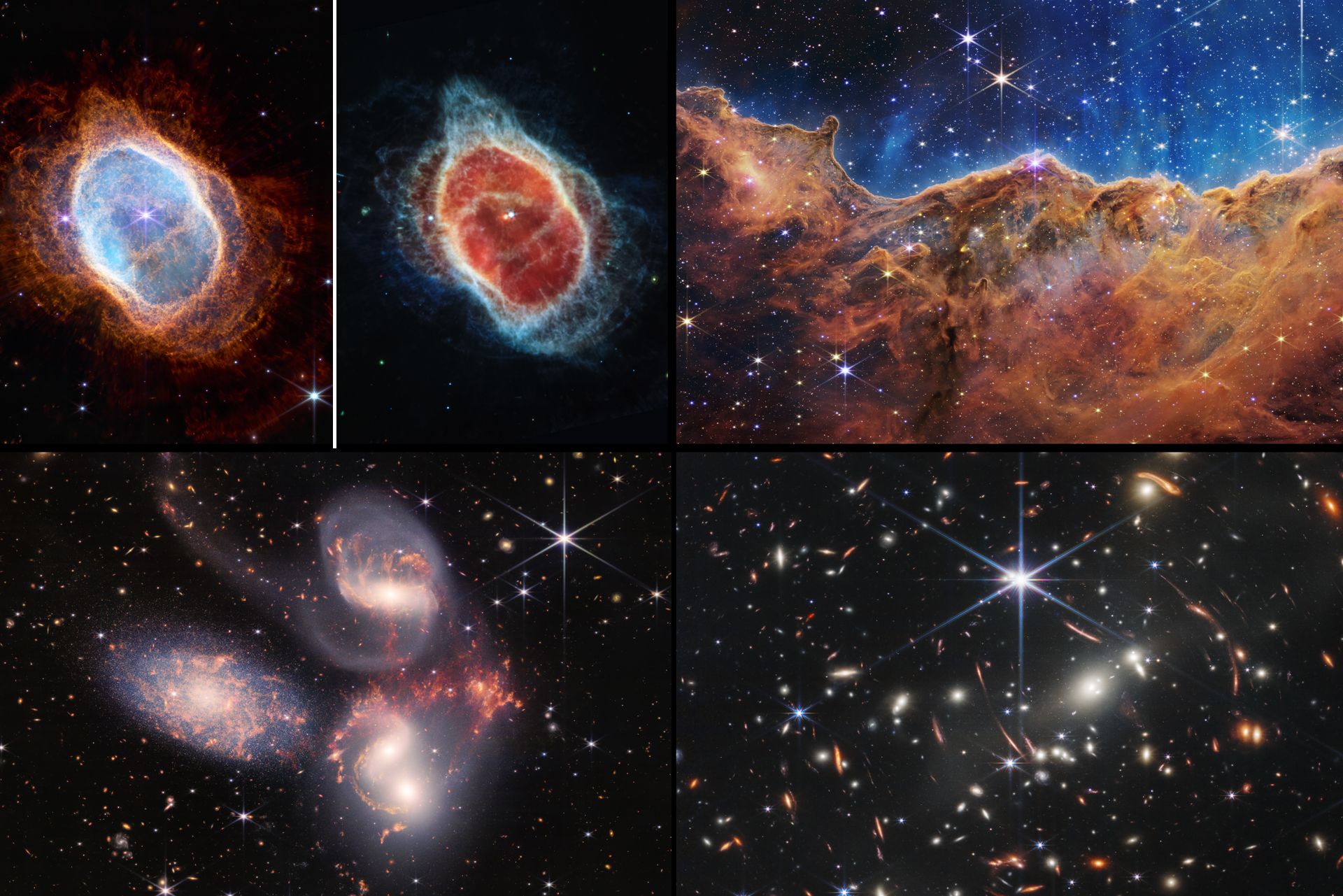
Webb’s first images. Credit: NASA, ESA, CSA, STScI, and the Webb ERO Production Team
Webb’s first images. Credit: NASA, ESA, CSA, STScI, and the Webb ERO Production Team
Webb’s extraordinary first images, and the many more that are still to come, are a testament to the scientists, technicians, engineers and support staff who contributed to all aspects of the mission, including MIRI. We’re exceptionally proud of our team and their involvement!
“As part of the engineering team here at RAL Space, we worked with our colleagues around the world for nearly two decades, all leading up to this moment. It is very rewarding to see these first results, and they are even more spectacular than I imagined. The scientific potential that Webb opens up is very exciting, and I look forward to seeing what it will discover in the years to come."
Tim Grundy, Lead Instrument Engineer and RAL Space MIRI project lead
Meet our team

Apprentices


RAL Space employs more than 330 scientists, engineers, technicians and support staff who are key to the success of our space missions and projects.
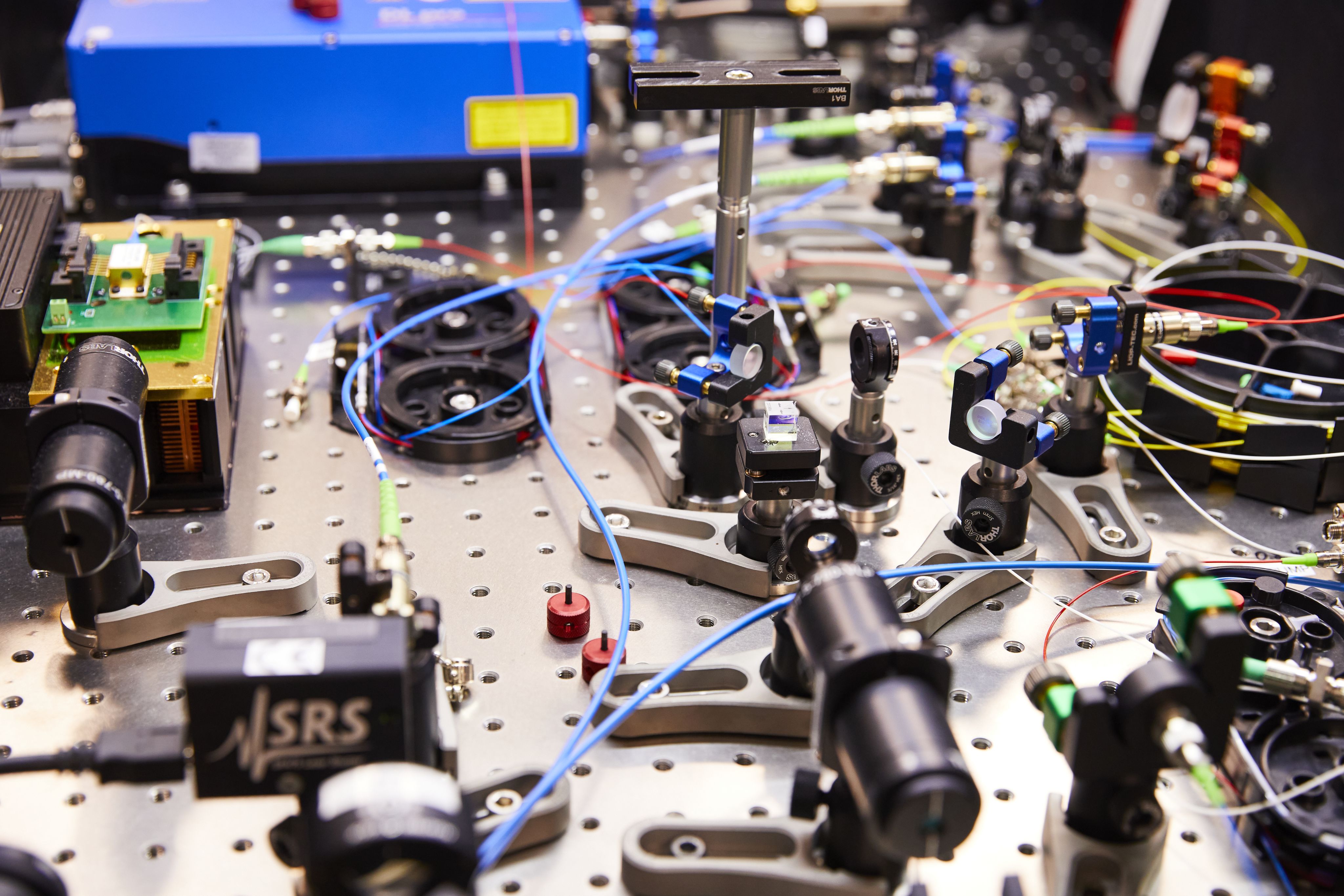
Meet Eimear Gallagher (2mins 15secs)
Meet Chris Pearson (6mins)
Meet Mark Anderson
I have over 35 years of experience in specialist assembly and my key role now is to ensure this knowledge is passed on to new engineers and technicians for future space projects and wider industries. I joined RAL Space’s Assembly, Integration and Verification (AIV) group as a test technician, operating and maintaining the various test facilities used for providing the space environment for testing space instruments. The role also involved supporting the manufacture of multi-layer insulation (MLI) blankets for space hardware, which I enjoyed immensely. I really relished the challenge of designing, manufacturing and wrapping a complex shape in foil, and this work allowed me to visit various facilities around the world to integrate the blankets I had manufactured onto the space hardware itself. This included a trip to NASA in the United States to integrate MLI blankets onto the James Webb Space Telescope’s Mid-Infrared Instrument, which is a project I’m very proud to have been part of.
As the AIV group became more test-based, my role changed, and I became responsible for the assembly and integration of complex instruments and assemblies. I was also given the chance to develop and manage the then-new Production Group, which gave me new challenges involving management of staff and recruitment. Unfortunately, this meant I spent less time doing what I enjoy best, which is hands-on activities, so I stepped aside to allow a new leader to run the group.
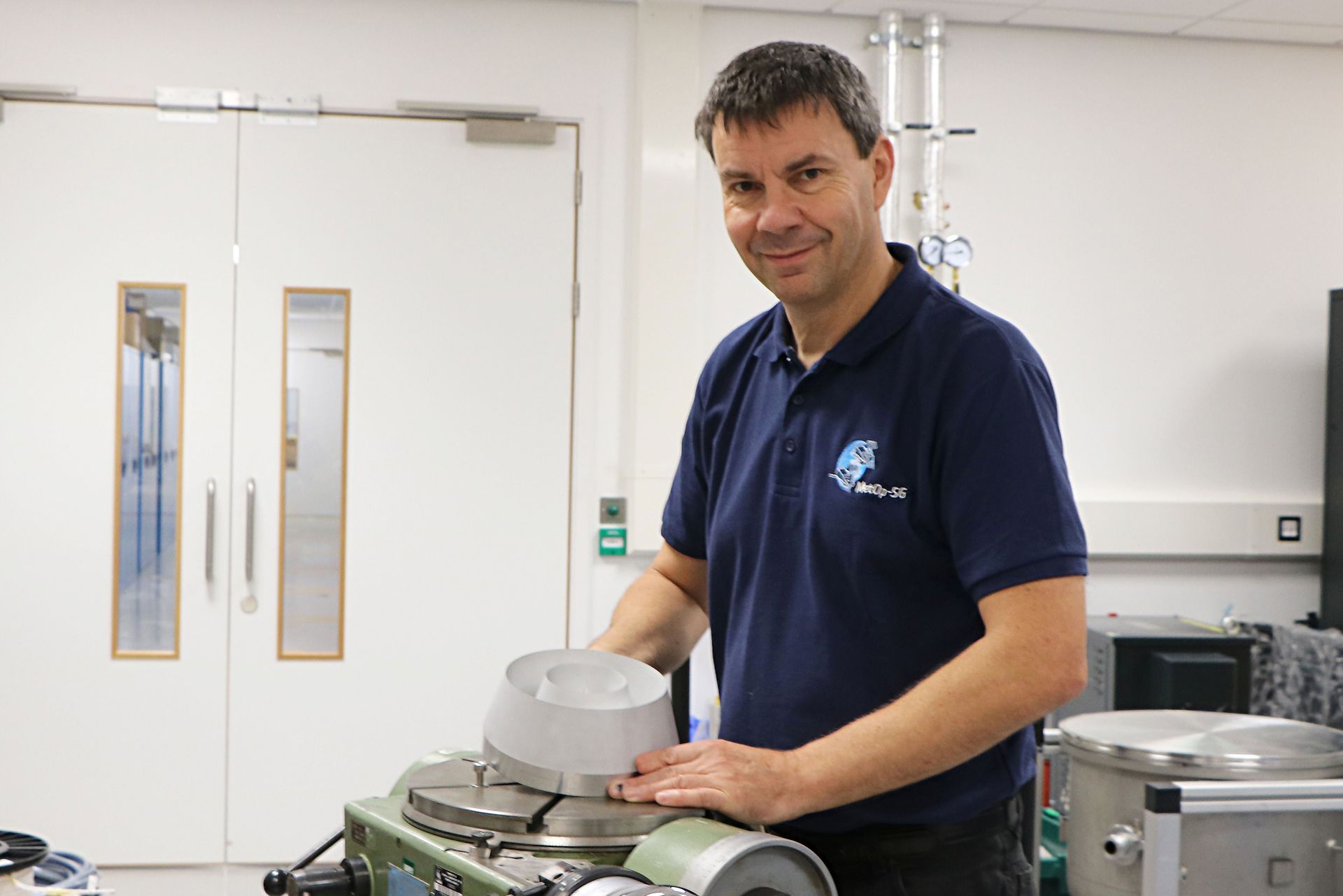
Mark working in the RAL Space development lab. Credit: STFC RAL Space
Mark working in the RAL Space development lab. Credit: STFC RAL Space
The best part of my job is having instruments and parts that I have handled or built orbiting in space or sitting on a far-flung planet, along with the varied and challenging work we are presented with. Every instrument has its own challenges, and each day is different. I also work with some very clever people in many disciplines, who all have knowledge that I can use to help me with my own development.
My advice for someone looking for a job in this industry would be to take every opportunity you can to learn something new. Never be frightened of changing direction in your career path. Always ask questions, it does not matter how silly you think they might sound, and keep everything as simple as possible.
Graduates



Space test services
and facilities
RAL Space's Environmental Test Division has grown from around seven members since it was formed in 2018, to 39 in 2022, and continues to provide thermal, vacuum, and mechanical testing services and facilities for customers, partners, and internal projects. Quality is a critical part of the test facility operation, and along with being re-certified to EN9100 this year, the facilities were audited by the European Space Agency (ESA) against the internationally recognised ECSS-Q-ST-20-07C standard.
The team have been busy making exciting progress towards the development of the National Satellite Test Facility (NSTF). The internal shrouds have been fitted to the large (7m) space test chamber, and tanks are now in place which will hold over 100,000 litres of liquid nitrogen to operate the chamber. Dynamics testing facilities have been installed and are expected to be handed over to RAL Space by the end of this year, with commissioning taking place in 2023.
For our existing facilities, October 2022 saw the completion of Airbus’ Sentinel-4 test campaign, which marked the first campaign to be completed in the first of our 5m thermal vacuum chambers. Sentinel-4 will monitor key air quality trace gases and aerosols over Europe as part of ESA’s Copernicus programme, and the completion of its test campaign at RAL Space represents an important step towards readying the instrument for integration onto EUMETSAT’s Meteosat Third Generation satellite.
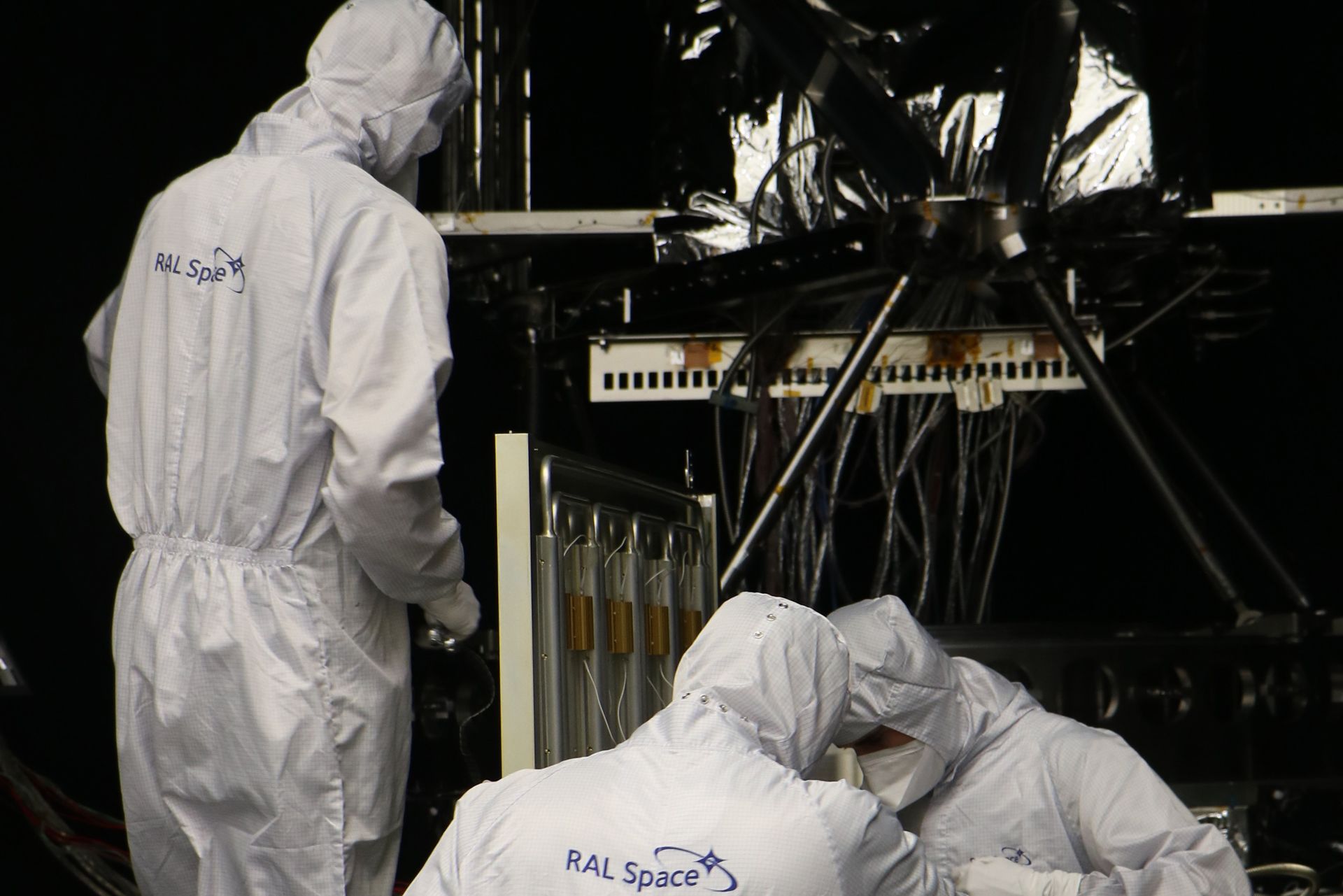
Sentinel-4 emerging from one of RAL Space's 5m space test chambers. Credit: STFC RAL Space
Sentinel-4 emerging from one of RAL Space's 5m space test chambers. Credit: STFC RAL Space
“I wish to congratulate the RAL Space teams for mastering the development of these complex space test chambers, and the successful transition into service. RAL Space have demonstrated their capability to provide this kind of key test service and together we have laid the foundation for the ECSS certification which will formally prove this to space industry. We are very much looking forward to returning to RAL Space for testing and characterising our second instrument in the near future.”
Christoph Erhart, Airbus Defence and Space Sentinel-4/UVN project manager
“I am delighted that we have recruited most of the team required for the operation of our existing and upcoming facilities. We are in the final stages of the equipment installation in the NSTF, and will start to take operational ownership of facilities at the end of this year. Critical to the test centre operation is the processes we follow, and I am pleased that we are re-certified to EN9100, and well on the track to being certified to ECSS-Q-ST-20-07C.”
Matt Fletcher, Environmental Test Division head

Science


Partnering up to reach net zero ambitions
The challenge: To implement its strategy for creating world-class research and innovation, UKRI supports a wide variety of digital research infrastructure (DRI) which is crucial for researchers to carry out their work. This research often has a part to play in enabling the transition to Net Zero. However, DRI can come at a considerable cost to the environment, and the use of computers of all types in research and innovation means that the very research itself can have considerable environmental impact.
The solution: The team at the Centre for Environmental Data Analysis (CEDA) is leading a 19-month scoping project to identify the principal constraints and opportunities affecting implementation of the UKRI Sustainability Strategy across the DRI. It will also advise on the most effective ways forward. The Net Zero DRI scoping project is undertaking a wide range of technical studies and engagement activities in order to inform future recommendations. These are being undertaken with a wide range of partners and stakeholders, through workshops and small commissioned projects. The scope of the project will cover all the UKRI-owned and majority-funded DRI.
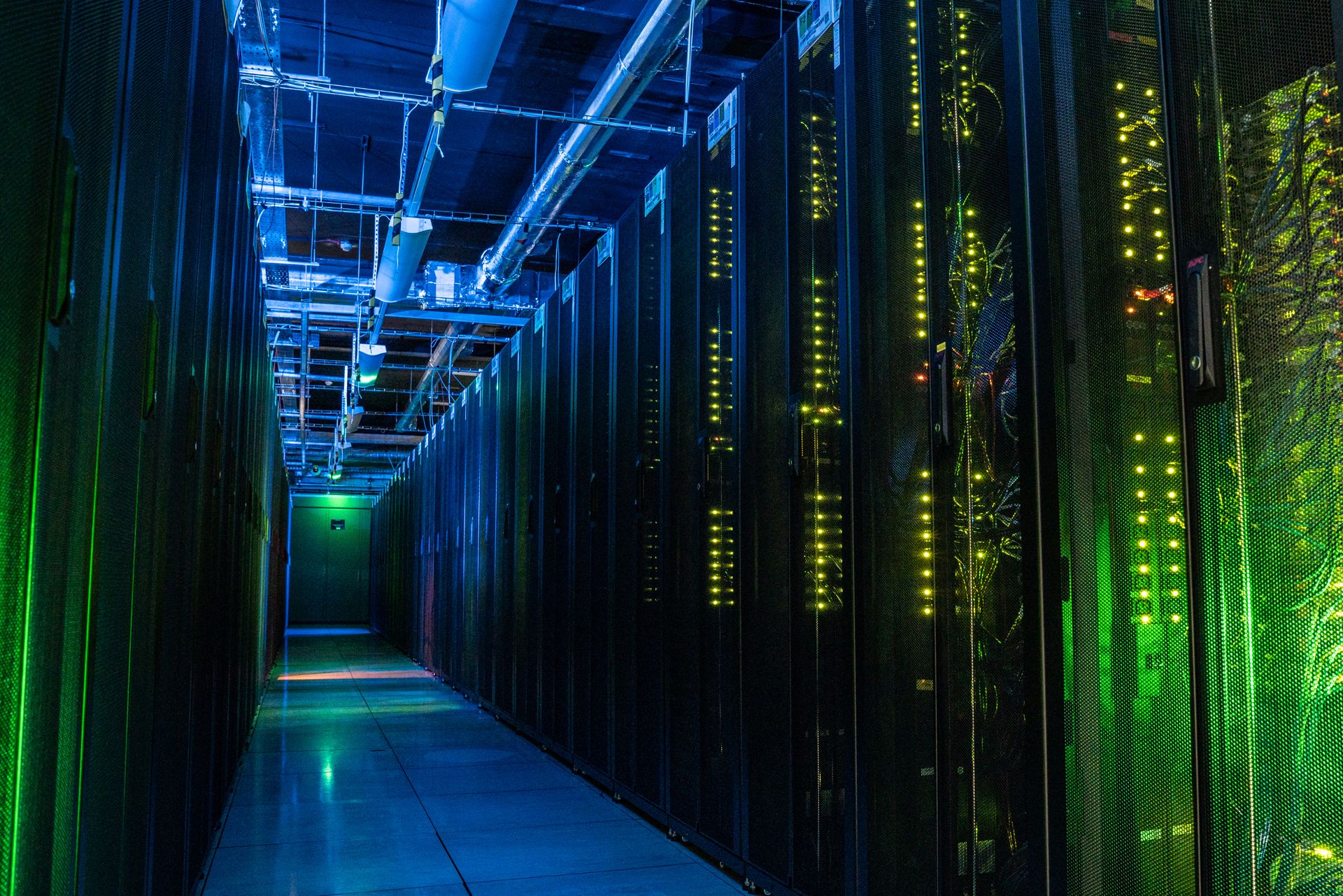
The JASMIN supercomputer, managed by the Centre for Environmental Data Analysis and STFC’s Scientific Computing Department. Credit: National Centre for Atmospheric Science
The JASMIN supercomputer, managed by the Centre for Environmental Data Analysis and STFC’s Scientific Computing Department. Credit: National Centre for Atmospheric Science
The outcome: With the scoping project well under way, CEDA has already published an interim report titled “Complexity, Challenges and Opportunities for Carbon Neutral Digital Research,” which summarises the key evidence-based recommendations for reaching UKRI’s Net Nero targets.
This interim report will feed into the final report (due in June 2023,) which will summarise all the evidence-gathering activities undertaken by the project and provide final recommendations. It will produce a clear roadmap for how UKRI can take action to reduce the carbon emissions from data generation, analysis, storage and dissemination from DRI, and will study how the entire UKRI DRI estate can deliver carbon neutral computing by 2040 or earlier.
Investigating curious weather phenomena
The challenge: “Ball lightning” is a strange phenomenon that has left observers and scientists puzzled for centuries. It has been said to appear during thunderstorms for up to ten seconds, manifesting as a floating ball of plasma between the size of a grapefruit and a football. However, despite various observations and experiments investigating the phenomenon, a widely accepted explanation for ball lightning is yet to be found.
We can’t predict when lightning will strike, and similarly we can’t predict when ball lightning might occur. Therefore, to study the phenomenon in greater detail, scientists must attempt to create a similar process in the lab.
The solution: As part of a wider project, RAL Space scientists have contributed to ball lightning research by developing a series of experiments that generate much smaller plasma fireballs – up to 5mm – to determine their lifetimes in atmospheric air and observe using a high-speed camera.
Informed by observations and theories surrounding naturally occurring ball lightning, the experiments aimed to investigate ways that the fireballs’ lifetimes might be extended, as well as the factors potentially influencing these lifetimes.
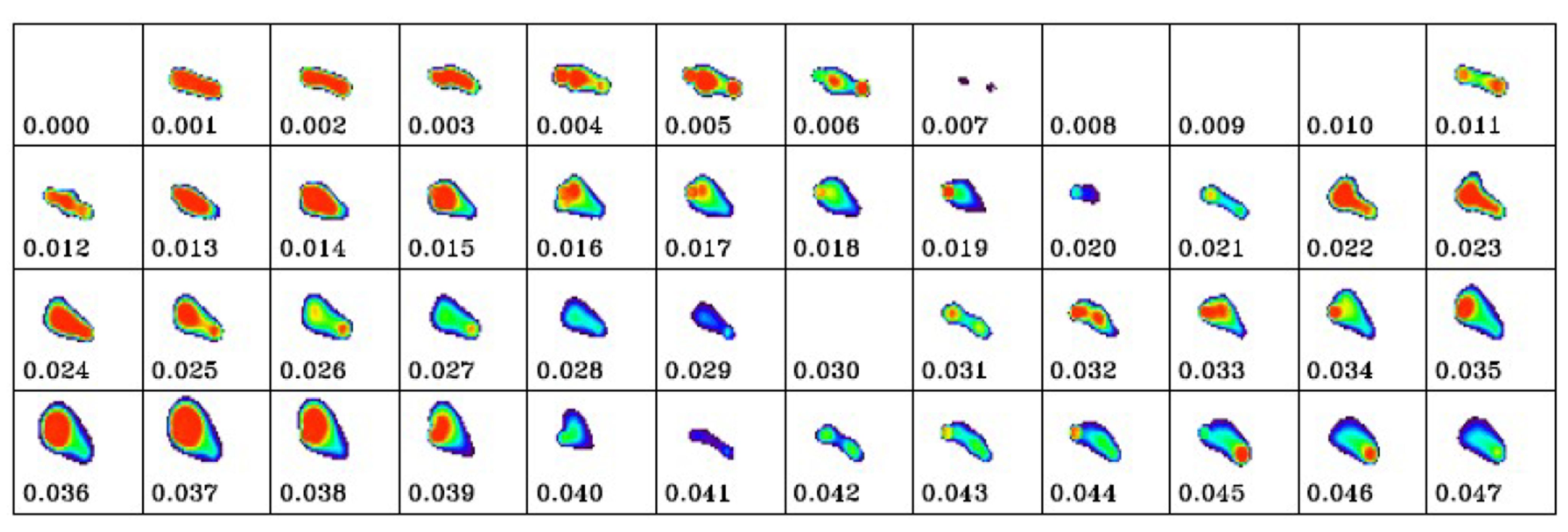
Video frames from the high-speed camera showing the initiation of the small plasma ball. Credit: STFC RAL Space
Video frames from the high-speed camera showing the initiation of the small plasma ball. Credit: STFC RAL Space
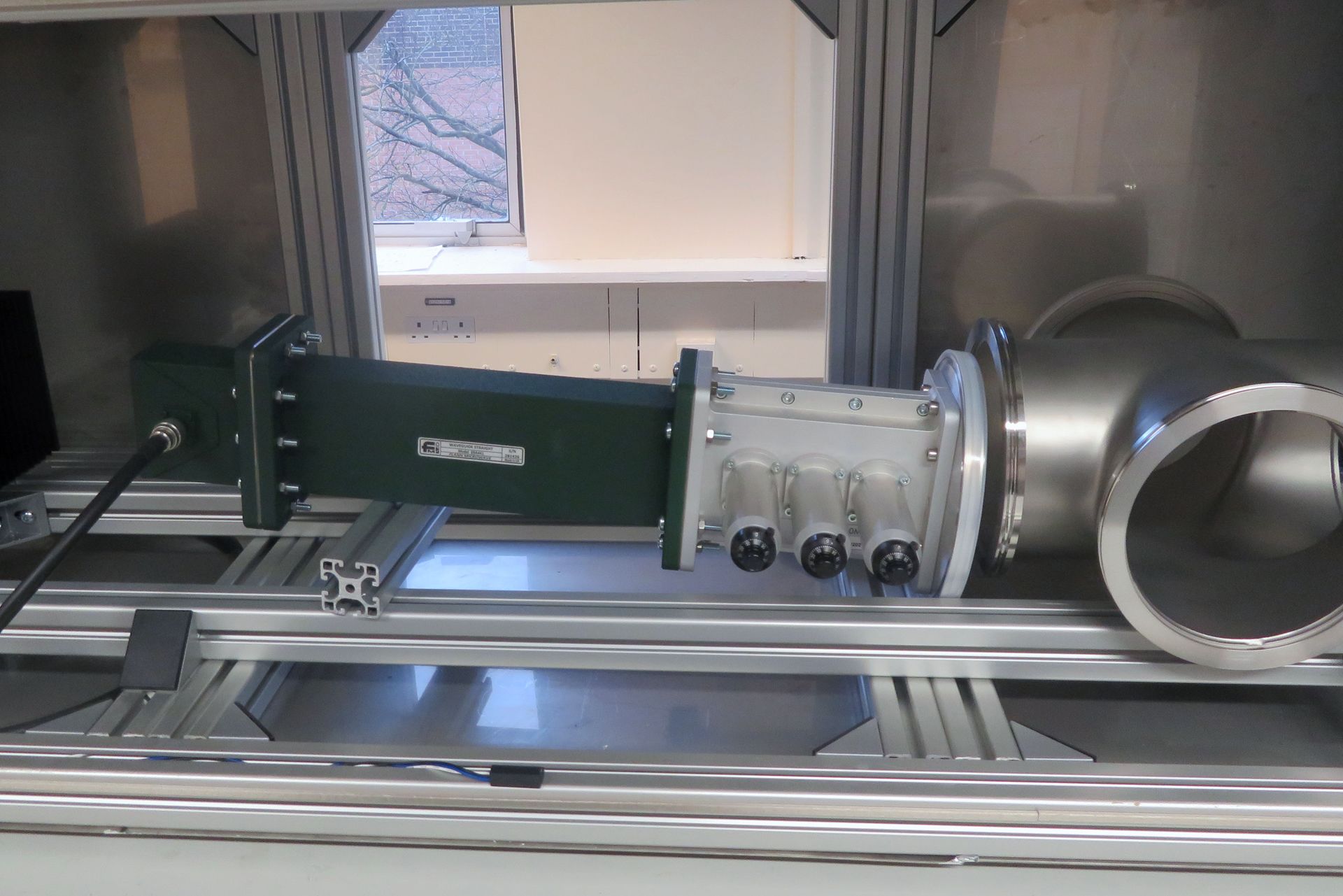
Experimental setup for the plasma ball research at RAL Space. Credit: STFC RAL Space
Experimental setup for the plasma ball research at RAL Space. Credit: STFC RAL Space
The outcome: RAL Space scientists were able to successfully generate plasma fireballs in the laboratory and to detect significant changes in the nature of the fireball on timescales of milliseconds.
The results and laboratory setup were used to put forward recommendations for future experiments, which would require a significantly faster high-speed camera to capture the generation of the fireballs.
It is hoped that further experiments could provide the first scientific evidence of at least one mechanism that could lead to natural ball lightning – perhaps finally shedding some light onto this unusual phenomenon.
“Ball lightning is such a spectacular and intriguing natural phenomenon, so this was an amazing project to be involved with. Yes, it is quite a long way from our main research area, but the opportunity to be able to study this in the laboratory and bring our creativity and engineering abilities to this terrestrial problem was too good to miss!”
Barry Kellett, Space Physics and Operations Division at RAL Space
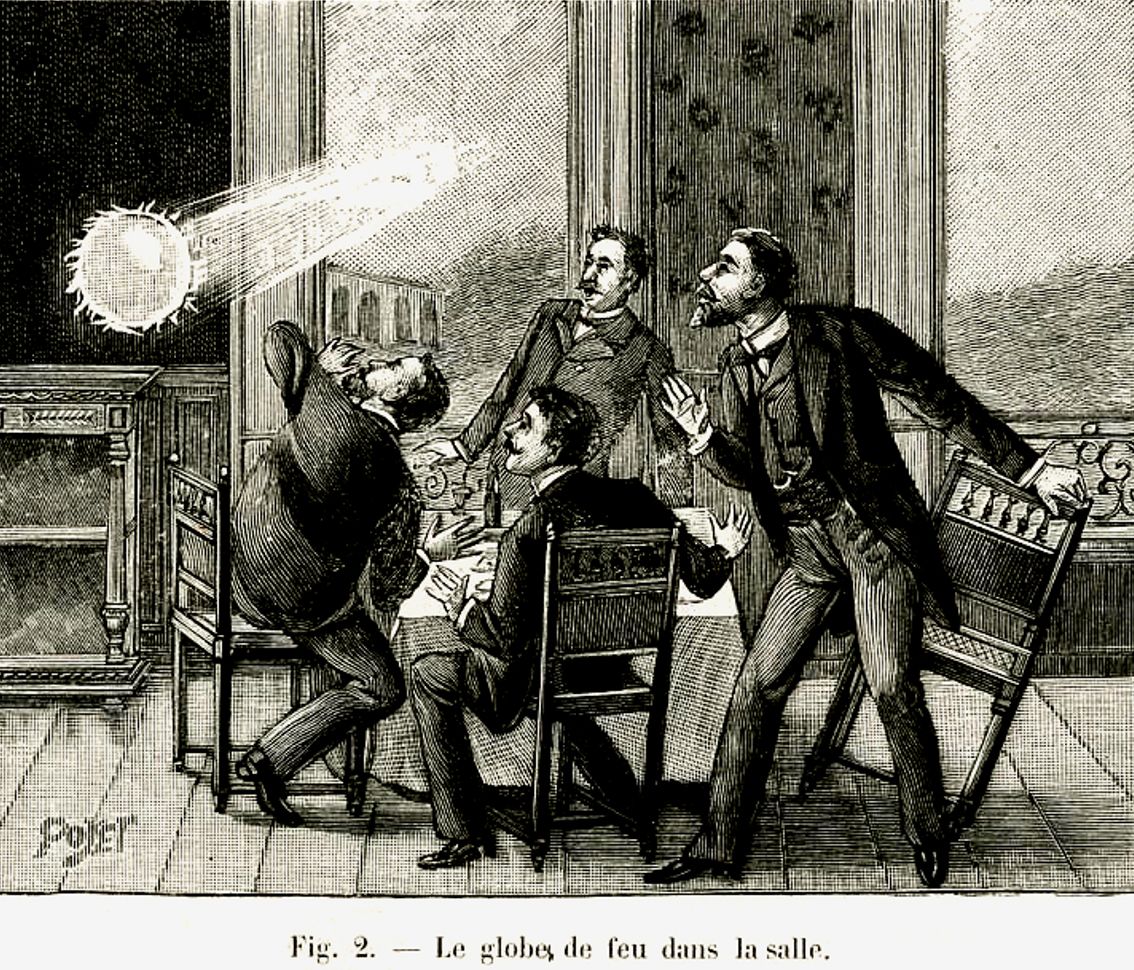
A 1901 depiction of ball lightning - Le globe de feu dans la salle - or in English, 'The globe of fire in the room'.
Via Wikimedia
Surveying forests using hyperspectral cameras onboard drones
The challenge: Surveying woodlands to determine tree numbers, species and health can be a laborious and painstaking task, often involving walking through large, forested areas manually assessing a sample of individual trees.
Understanding tree populations and how they change over time is important in our drive towards Net Zero, as it allows for a better understanding of not just how many and what type of trees there are, but also how much carbon they’re likely to absorb and store over time.
By moving surveys into the air, researchers can use modern camera technology to take a far broader view of an area’s tree population, determining not only the make-up of trees, but whether those trees are unhealthy and capturing less carbon due to the effects of disease, pests or climate change.
The solution: The RAL Space Earth observation team proposed to use drones fitted with commercially available hyperspectral cameras to assess and monitor tree populations from the sky.
Hyperspectral cameras aim to gather light from across the electromagnetic spectrum, from the ultra-violet through to the near infrared, allowing for more detailed analysis than traditional RGB (red, green and blue) cameras.
The system developed by RAL Space uses two cameras that can cover 41 wavelengths of light in regions that the human eye can see, and regions far beyond. Different compounds found in plants absorb different wavelengths of light, giving each plant a unique ‘fingerprint’ that can be seen using a hyperspectral camera. Where a group of sweet chestnut trees may look distinctly different from a group of oaks, a group of healthy oaks can also look different from a group that is stressed or diseased.
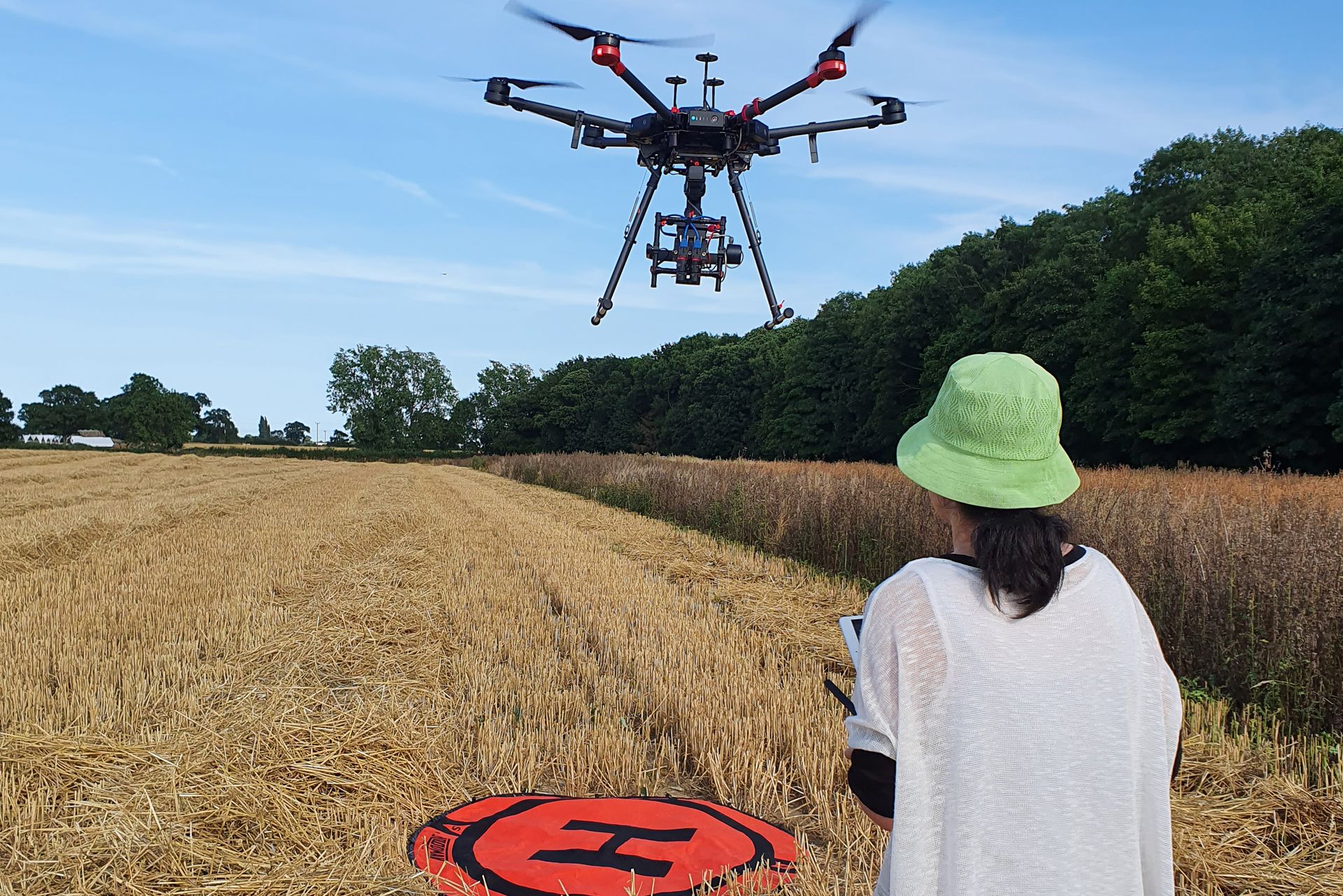
Drone landing after surveying the Long Plantation Woodland in Norfolk, UK. Credit: STFC RAL Space
Drone landing after surveying the Long Plantation Woodland in Norfolk, UK. Credit: STFC RAL Space
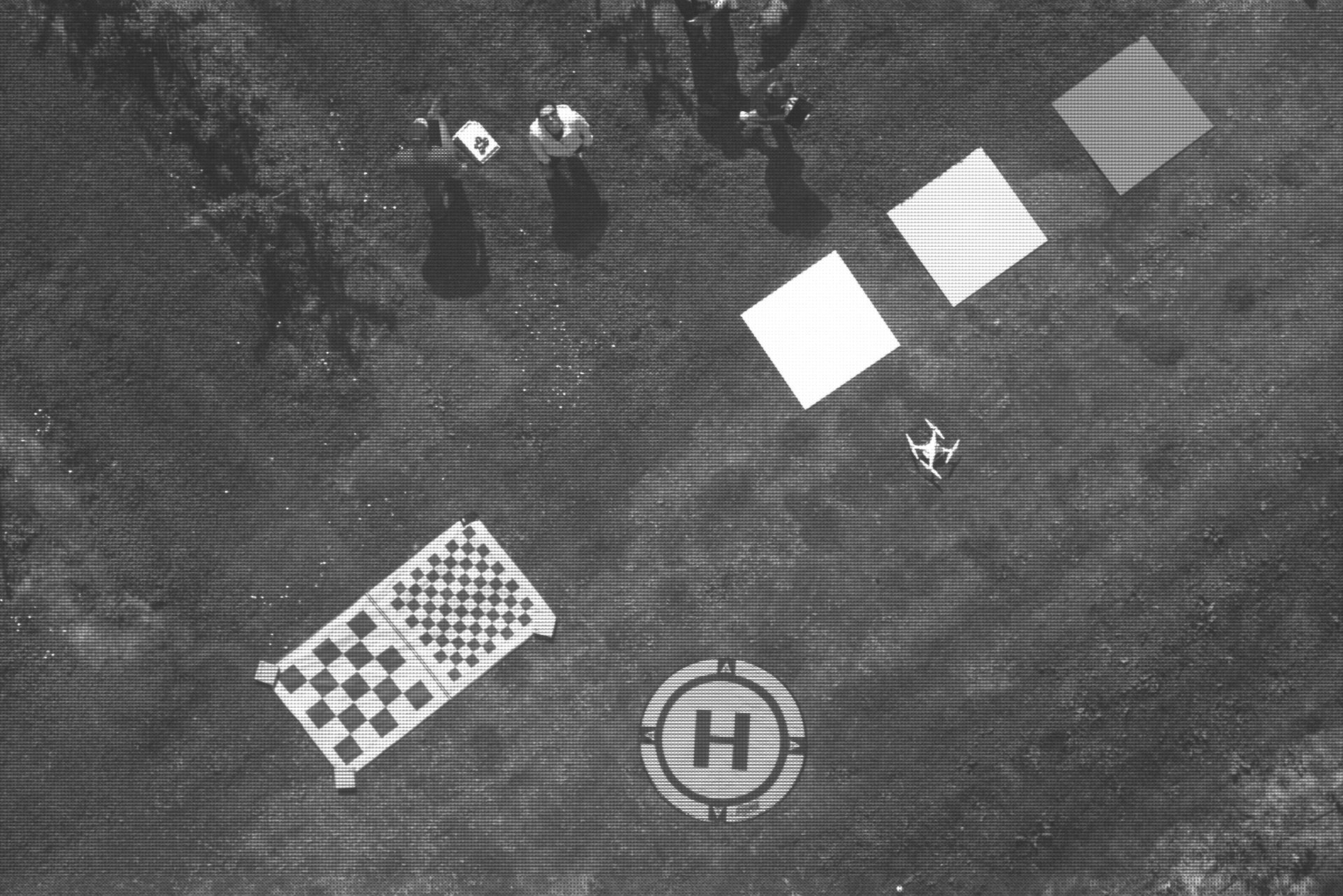
Raw calibration image from the Visible Imager of the RAL Space hyperspectral system. Credit: STFC RAL Space
Raw calibration image from the Visible Imager of the RAL Space hyperspectral system. Credit: STFC RAL Space
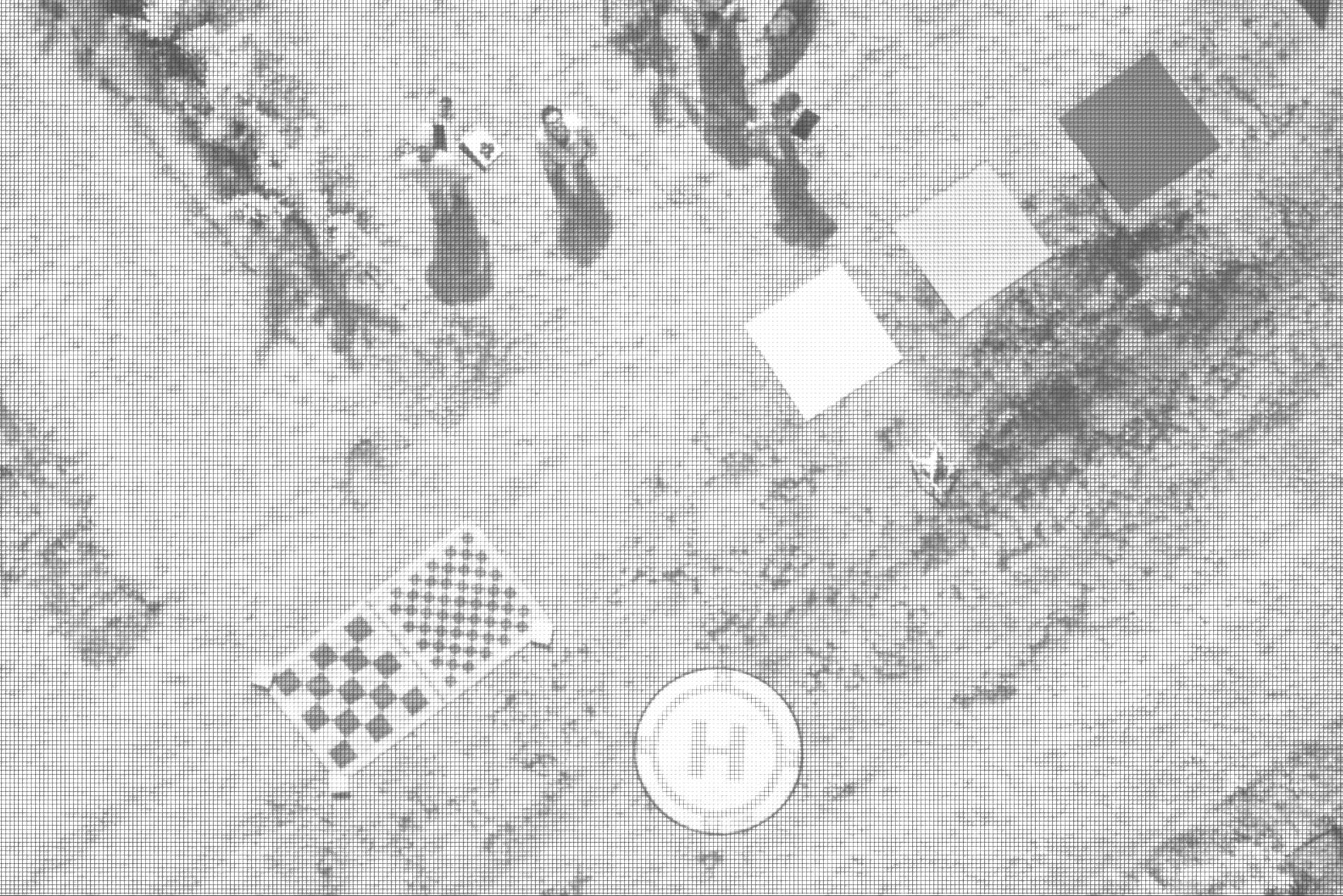
Raw calibration image from the Near-Infrared imager of the RAL Space hyperspectral system. Credit: STFC RAL Space
Raw calibration image from the Near-Infrared imager of the RAL Space hyperspectral system. Credit: STFC RAL Space
The outcome: Calibration is a critical component of any system that wishes to compare measurements and achieve qualitative and quantitative results. The RAL Space team has spent time developing a robustly calibrated system to make sure that the data collected meets high international standards and is able to withstand and account for changing conditions – for example, changing weather or light conditions.
Due to the vast amount of data captured by the cameras, machine learning algorithms are also being developed with university partners, to help turn the data into a useful and usable form.
The team aims to work with national and international partners to develop and calibrate hyperspectral cameras so that not only drones, but satellites too, can produce accurate woodland surveys with a fraction of the time and cost of traditional manual surveys.
To validate the results, RAL Space has developed a network of partners to confirm and cross-reference drone-based data with advanced ground-based sensors, and health assessments performed by experienced agronomists.
Public engagement

Enriching young people’s education through partnerships
RAL Space collaborated with five new partners including the Jon Egging Trust (JET) to support disadvantaged young people raise their confidence and aspirations, and explore career opportunities in STEM. In 2022, the disadvantage gap index for pupils aged 7-11 in England increased to 3.21 (i). Pupils from more deprived backgrounds achieved lower grades, which will likely influence their future employment prospects (ii). We co-delivered four workshops for 43 pupils with JET, and our ambassadors helped them build STEM knowledge, teamwork and leadership skills in exciting space mission challenges. We inspired 53% of them to pursue STEM careers and will continuing raising their science capital over a three-year programme as part of this partnership.
Spacecraft workshops for schools with the Jon Egging Trust (2mins 28secs)
“I found it exciting getting to come to RAL Space and see what they actually do. We got to do a lot of stuff that we wouldn’t normally get to do, and we got to see a lot of scientific projects and learn more about space. It was really fun and it was a good learning experience - I would like to come again!”
Year 8 pupil from Carterton Community College
(i) Key stage 2 attainment Academic Year 2021/22, Department for Education, 2022.
(ii) Education inequalities, IFS Deaton Review of Inequalities, Farquharson, C., McNally, S. and Tahir, I., 2022.


For more information, please contact
Rutherford Appleton Laboratory
Harwell Campus
Didcot
Oxfordshire
OX11 0QX
www.ralspace.stfc.ac.uk
